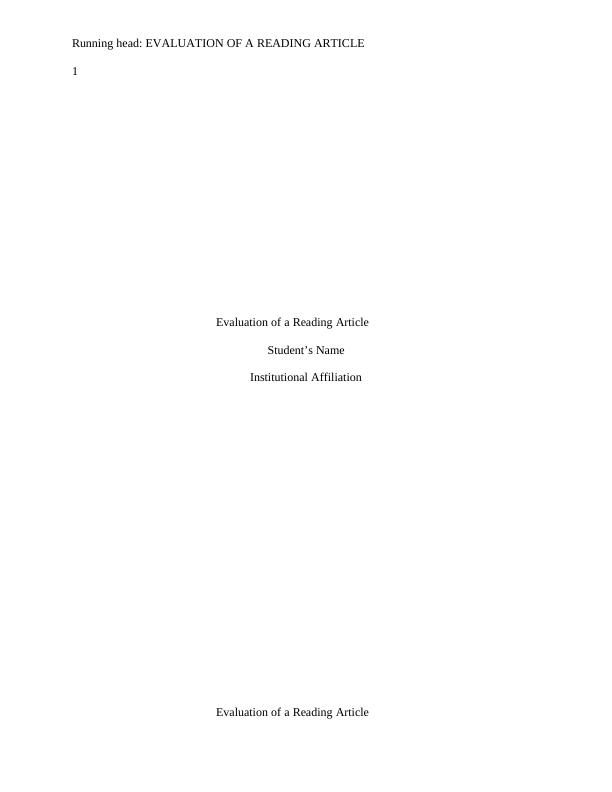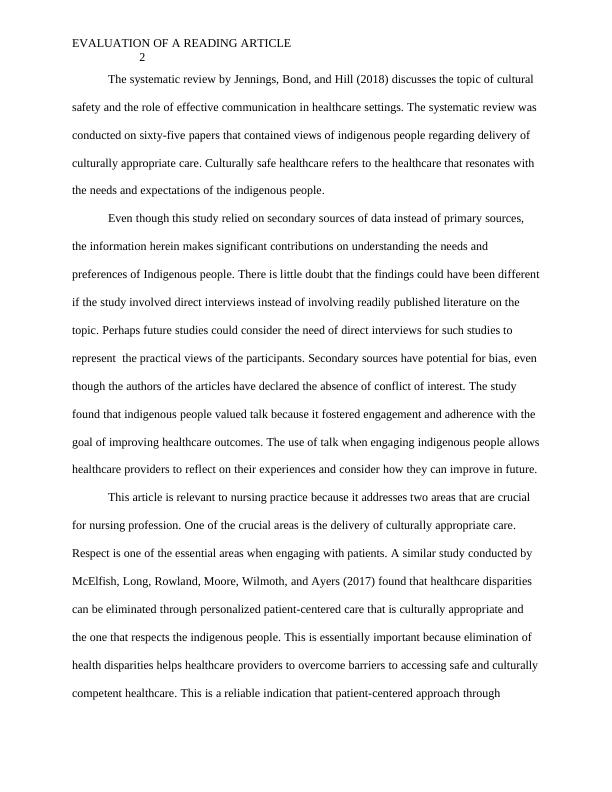Evaluation of a Reading Article
Added on 2022-07-28
4 Pages671 Words24 Views
End of preview
Want to access all the pages? Upload your documents or become a member.
Healthcare Challenges for Aboriginal Peoples
|19
|1771
|82
Lack of Medical Resources in Rural Areas- Challenges and aspirations
|5
|1199
|201
Indigenous Communities Healthcare in Australia Assignment
|6
|1038
|27
Reflection on How the Indigenous Health and Well-Being Will Impact on My Future Nursing Practice
|4
|803
|16
Aboriginal and Torres Strait People’s Rate of DAMA
|7
|1692
|101
Health and Education of Aboriginal Community
|8
|1920
|435

